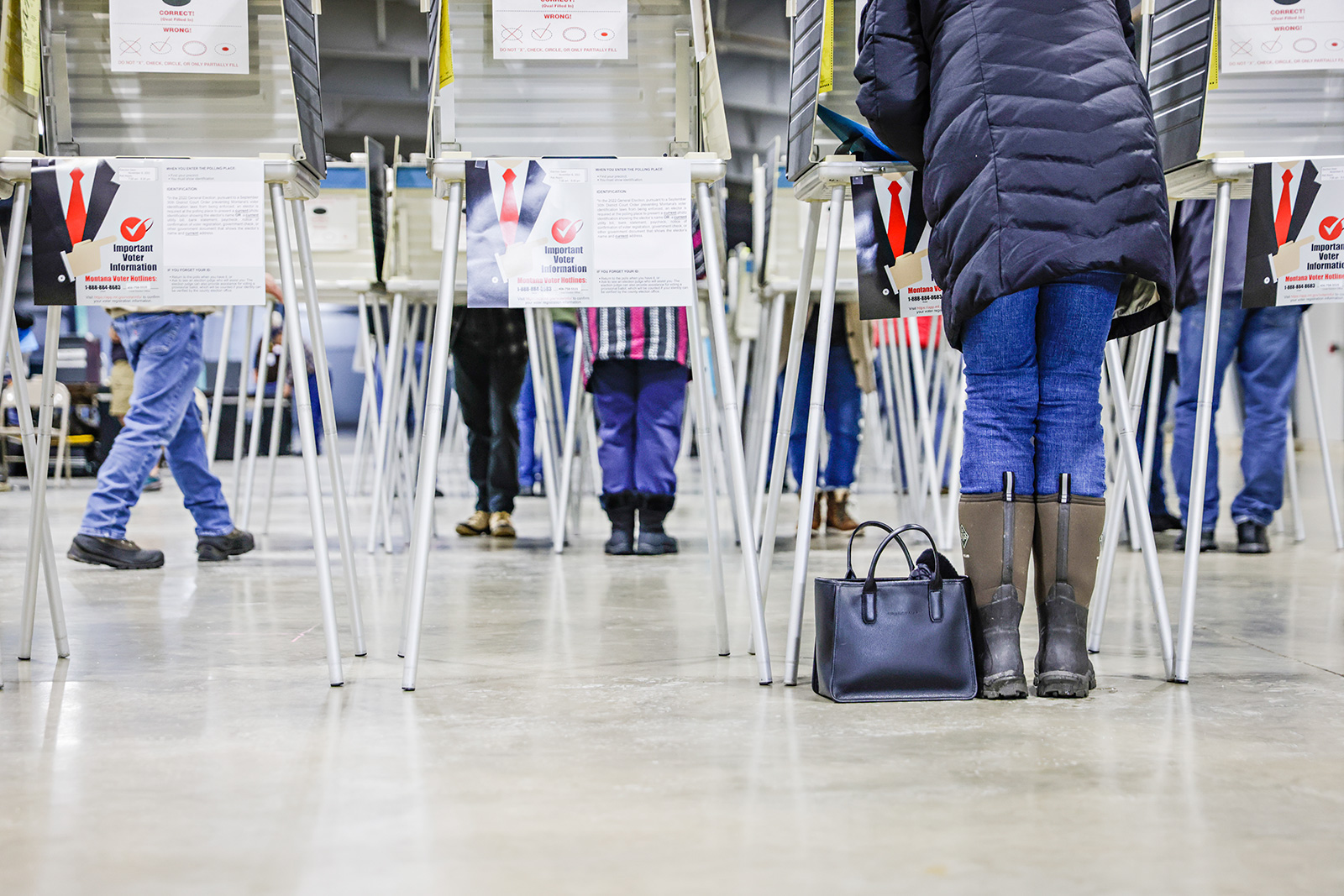Brown Concedes State Supreme Court Race to Gustafson
Incumbent Justice Ingrid Gustafson led with 54% of the vote as of Wednesday morning in the most expensive Supreme Court race in Montana history
By Mara Silvers, Montana Free Press
Incumbent Supreme Court Justice Ingrid Gustafson is poised to serve a second term on Montana’s highest court after winning her race for re-election against attorney and Republican Public Service Commission President James Brown.
With 66% percent of precincts reporting, Gustafson held an 8-point lead over Brown, a 35,216 vote margin, as of Wednesday morning. The Associated Press has not declared Gustafson the winner in the race. Gustafson’s campaign did respond to a request for comment before publication.
Brown released a statement conceding the race just before 8:30 a.m, congratulating Gustafson on her re-election and attributing his loss, in part, to high-dollar spending by third-party groups in the final weeks of the campaign.
“We fell short after a hard-fought campaign where we were significantly outspent by special interest groups and saw millions of dollars in liberal money flood the state in the final weeks of this race,” Brown wrote. “Even so, I am humbled by the high level of support our campaign received from Montanans from all across the Treasure State and from all walks of life.”
The court’s other incumbent running to retain his seat, Justice Jim Rice, held a roughly 56 percentage point lead in his race against Billings attorney Bill D’Alton as of Wednesday morning. Neither candidate has released statements conceding or declaring victory.
Originally appointed to the state Supreme Court in 2017 by Democratic Gov. Steve Bullock, Gustafson was unopposed when she ran to retain her seat in 2018. She joined the court after serving as a district court judge in Yellowstone County for 14 years. Throughout her judicial tenure, she’s focused on expanding drug treatment courts and developing court reforms for child welfare cases.
Over the course of her eight-month campaign, the veteran judge asked voters to think of her as an impartial referee who leaves personal politics and preferences at the door of the courtroom. Brown and his supporters portrayed her as liberal, lenient on criminal sentencing, and ethically compromised by the support of lawyers who have argued cases before her.
Gustafson’s message appeared to gain the most traction among voters, despite a contest colored by partisan favoritism and record-breaking spending by third-party interest groups.
The Montana Republican Party, the state’s top elected officials and national conservative interest groups were early and vocal supporters of Brown, bucking political norms for Montana’s nonpartisan judicial races in which candidates are bound by a strict code of conduct. Left-leaning political action groups, including supporters of abortion rights and public land access, responded by rallying behind Gustafson. Those surrogates, along with the historically influential Montana Trial Attorneys political action committee, spent heavily on messaging that championed the incumbent as a defender of Montana’s constitutional rights.
Collectively, outside groups spent well over $3 million on mailers, television ads, polling and door-knocking for Brown and Gustafson over the course of the campaign, with a flurry of spending stacking up in the final month of the campaign.
Gustafson’s apparent victory over Brown, on a night when other Republican-backed candidates made gains up and down the ballot, is a reminder of how powerful incumbency can be in nonpartisan elections, said University of Montana political science professor Rob Saldin. The fact that the Republican party touted Brown’s candidacy so doggedly, he added, may have also increased the race’s visibility among liberal voters.
“It is the case that the Democrats and people on the left in general, at least those who are clued in and follow this stuff closely, they’ve rallied to her,” Saldin said. “People are talking about this more than I can ever remember in a Supreme Court race.”
Jessi Bennion, a political science professor at Montana State University and Carroll College, said the results of the Supreme Court race will likely frustrate Republicans who see the judicial branch as an elusive element in their effort to control the levers of state government.
“The court really is the last GOP holdout in the state, so I think they’re going to keep trying. The problem is, they have a light bench,” Bennion said. “And we can see, plainly now, that it’s been a miscalculation to put a partisan label on a candidate for the court.”
As of Wednesday morning, with thousands of ballots still being counted, other legislative, statewide and federal races remained too close to call. The Montana secretary of state’s office is scheduled to finish canvassing and certifying the results of the election by Dec. 5.
This story originally appeared in the Montana Free Press, which can be found online at montanafreepress.org.